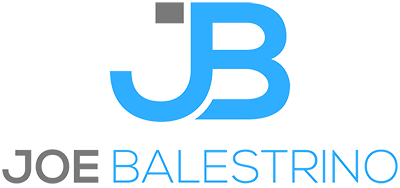Enhance Ad Relevance
When it comes to improving your Click-Through Rate (CTR), there are many factors that can come into play. However, one of the most important is the relevance of your ads to user search queries. After all, if your ads aren't relevant to what users are searching for, they're not likely to be clicked on. So, what can you do to improve the relevance of your ads? Here are a few key approaches that you can consider:
Firstly, Keyword Optimization is a critical factor to consider. You need to ensure that your keywords align with your ad copy and landing page. This means that you should use targeted and specific keywords that will attract the right audience. Make sure that your keywords are relevant to the search queries you're targeting, and that they're used in a way that makes sense to the user.
Another important factor to consider is Ad Group Structure. By creating tightly themed ad groups, you can improve the relevance of your ads. This means grouping keywords and ad copy around specific themes or product categories. By doing so, you can make your ads more targeted and relevant to the user's search query.
Finally, Ad Copy Optimization is also critical. You need to craft compelling and engaging ad copy that clearly communicates your unique selling points and encourages users to click. Incorporate relevant keywords into your ad copy, but make sure that it reads naturally and isn't just a list of keywords. And, of course, include a clear call to action to encourage users to click through to your landing page.
By taking these approaches into consideration, you can improve the relevance of your ads and increase your CTR. So, take the time to optimize your keywords, ad group structure, and ad copy, and you'll be well on your way to success.
Utilize Ad Extensions
A/B Testing
Improve Ad Positioning
Ad positioning is a critical factor in determining the click-through rate (CTR) of your ads. The higher the ad position, the more visibility and clicks you can expect to receive. Therefore, it is crucial to implement effective strategies to improve your ad positioning and maximize your advertising efforts.
One strategy to improve your ad positioning is through bid adjustments. By increasing your bids for high-performing keywords or specific target locations, you can increase your chances of securing a higher ad position. This will ultimately result in greater visibility and a higher CTR for your ads.
Another effective strategy is ad schedule optimization. It is essential to analyze the performance of your ads during different times and days to determine when your target audience is most active and likely to engage. By allocating more budget to these periods, you can ensure that your ads are being displayed during the times when they are most likely to be seen and clicked on.
By implementing these proven strategies, you can enhance your ad positioning and improve your overall advertising performance. Remember, a higher ad position means more visibility and clicks, which can translate into increased conversions and revenue for your business. So, take the time to optimize your ad positioning today and reap the rewards of a successful advertising campaign!
Ad Optimization for Mobile
Continuous Monitoring and Optimization
Regularly monitoring your campaigns, analyzing performance metrics, and making data-driven optimizations is a crucial step in improving your Click-Through Rate (CTR) on Google Ads. By actively tracking and assessing the performance of your campaigns, you gain valuable insights that allow you to make informed decisions and take necessary actions to enhance your CTR.
Monitoring your campaigns involves regularly checking the performance metrics provided by Google Ads. These metrics include CTR, impressions, clicks, average position, and conversion data. By monitoring these metrics, you can gain a comprehensive understanding of how your ads are performing and identify areas for improvement.
Analyzing performance metrics is the next step in the process. Dive deeper into the data to identify patterns, trends, and potential issues. Look for keywords, ad variations, or targeting settings that are underperforming and contributing to a low CTR. By conducting a thorough analysis, you can pinpoint the specific areas that need attention and optimization.
Identifying low-performing keywords is crucial in improving your CTR. Analyze the performance of your keywords based on their CTR, impressions, and conversions. Identify keywords that have a low CTR but a high impression count, as this suggests that they are not resonating with your target audience. Consider pausing or modifying these keywords to improve your CTR.
Similarly, evaluate your ad variations to identify those that are not generating enough clicks. Examine the ad copy, headlines, and call-to-action elements to ensure they are compelling and engaging. Experiment with different variations to find the ones that resonate best with your target audience and drive a higher CTR.
Boosting your Click-Through Rate (CTR) on Google Ads requires a combination of strategies focused on enhancing ad relevance, utilizing ad extensions, conducting A/B testing, improving ad positioning, optimizing for mobile, and continuous monitoring. By implementing these tactics and constantly optimizing your campaigns, you can increase CTR, drive more qualified traffic to your website, and achieve better results from your Google Ads investment. Stay proactive, adapt to your audience's needs, and continually refine your ads to optimize your CTR and drive success in your advertising campaigns.











